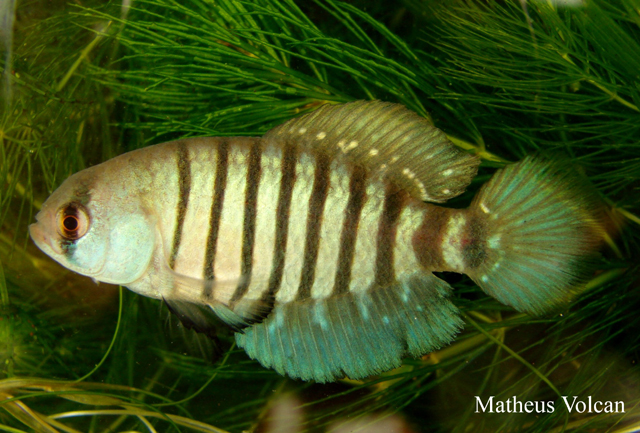| Rivulidae (Rivulines), subfamily: Cynolebiinae |
| 4.65 cm SL (male/unsexed); 4.11 cm SL (female) |
|
benthopelagic; freshwater, non-migratory |
| South America: plains close to southern tip of laguna dos Pastos, southern Brazil. |
|
Dorsal spines (total): 0-0; Dorsal soft rays (total): 18-25; Anal spines: 0-0; Anal soft rays: 21-27; Vertebrae: 27-30. Two apomorphic color patterns, body bright gray with dark gray to black stripes in males (versus light gray or no stripes; stripes wider than the light interspaces) and a vertically paired black blotch on caudal peduncle of juveniles and females (versus small spots irregularly arranged, or a single round dorsally positioned spot, or no spots on caudal peduncle). Second pharyngobranchial teeth 6-7 and adult males with a rather deep body which sometimes forms a discoid body morphology. Supraorbital neuromasts 16-19, scales on longitudinal series 26-28. Dorsal fin origin anterior to anal fin origin, caudal fin rays 22-25. Caudal fin rounded. |
|
|
Near Threatened (NT); Date assessed: 07 November 2018 (B1b(iii)) Ref. (130435)
|
| harmless |
Source and more info: www.fishbase.org. For personal, classroom, and other internal use only. Not for publication.
